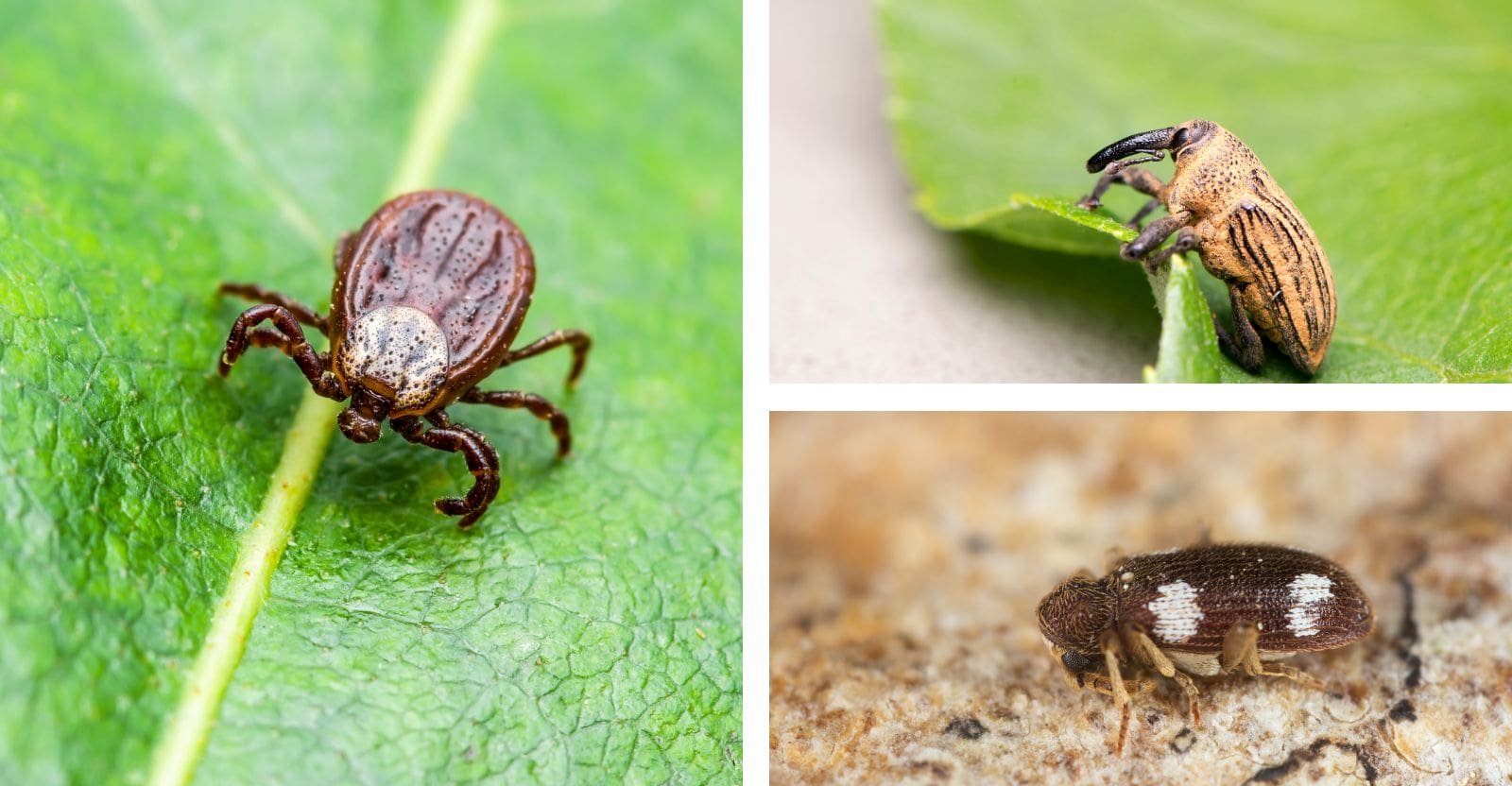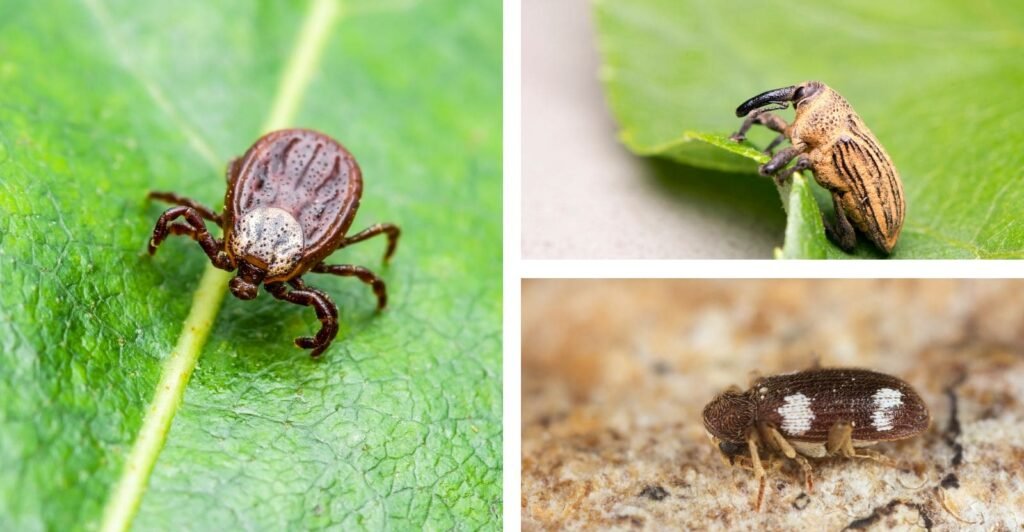
Ticks are often considered one of the most troublesome creatures for humans, and for good reason. With over 800 species worldwide, these tiny, blood-sucking parasites are found just about everywhere. While many ticks feed on rodents, birds, and other animals, the ones you’re most likely to encounter in the United States are the deer tick and the dog tick.
But what if you spot a bug and aren’t sure if it’s a tick? Well, you’re not alone. Many bugs look similar to ticks, and it can be tricky to tell them apart. In this post, we’ll cover 15 bugs that resemble ticks, so you can learn how to spot the difference.
Let’s dive in!
What Are Ticks and What Do They Look Like?
Ticks are small, ground-dwelling arachnids that are often found in grassy areas, leaf piles, or forests. They are most active in the spring and summer but can survive year-round. Ticks, especially Lyme disease-carrying ones, are commonly found in wooded areas. These tiny parasites can be tough to spot due to their small size.
A tick’s mouth looks like a tube with two small hooks at the end. These hooks latch onto their host as the tick feeds on blood. Ticks go through four life stages: egg, larva, nymph, and adult. Larvae are less than 1 mm long, nymphs are about 2 mm, and adults grow between 6 and 10 mm in length.
To identify a tick, look for its eight legs (which sets it apart from insects, which only have six) and its oval, flat body. If the insect has wings or antennae, it’s not a tick.
Common Types of Ticks and How to Identify Them
Here’s a look at some of the most well-known ticks you might find in the wild:
- Deer Tick
- Soft Tick
- American Dog Tick
- Bed Bug
- Lone Star Tick: This reddish-brown tick, found across the U.S. from Maine to Florida, has a distinctive white spot in the center of its back. The female is slightly larger than the male, and they can be as small as a sesame seed. These ticks can carry a variety of diseases.
- American Dog Tick: This tick is identifiable by three features: a white marking on the scutum (the back), white luster on its legs, and a size that ranges from 1/8” to 1/2” long. They are often grayish-brown with a rusty-orange underside.
- Blacklegged (Deer) Tick: Found in forests, these ticks are flat, reddish-brown, and carry Lyme disease. They often cause illnesses like ehrlichiosis and anaplasmosis, which can mimic flu symptoms.
15 Bugs That Look Like Ticks
Many insects resemble ticks, so it’s essential to know how to tell them apart to avoid health risks. While ticks can carry diseases like Lyme disease, not all similar-looking bugs are harmful. Here are 15 bugs that look like ticks, but aren’t:
Cockroach nymphs are the babies of the cockroach family. They’re white and look like small worms. They spend most of their time hiding in cracks and under floorboards.
Nymphs are lighter in color than their adult counterparts, which is why they’re sometimes called brown-banded cockroaches.
They’re usually less than 3 mm long and darken as they grow. They have a very uncanny appearance, like ticks when they just hatched from an egg.
Booklice are the most common type of pest found in books and are also known as Psocids. You may find these inside books that are stored for an extended period. Paper cellulose becomes a primary source of food for these pests.
The booklice bugs are usually light in color but can appear dark in color when feeding on the binding glue. They’re small insect that also feeds on fungi, algae, and other decaying matter.
1. Brown Marmorated Stink Bugs
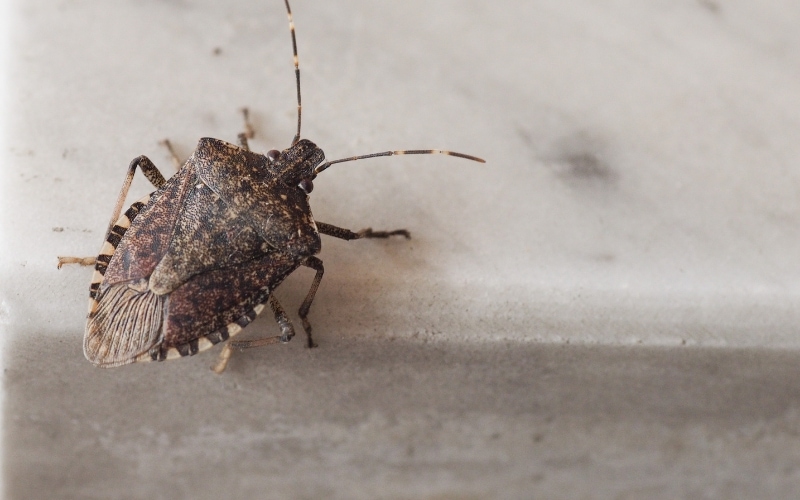
Identifying Brown marmorated stink bugs can be tricky, but it’s easier if you know what to look for. Their eggs are laid in clusters, usually on the underside of leaves.
The eggs are 0.5 mm long and greenish-white in color. They’re oval and can be slightly flat. These bugs don’t belong to ticks’ arachnid’s species.
They have six legs and antennae, but ticks have eight legs with no antennae. The stink bug nymphs have a light greenish-yellow color with black antennae and brownish-red legs. They have a white stripe on their antennae.
2. Bed Bug
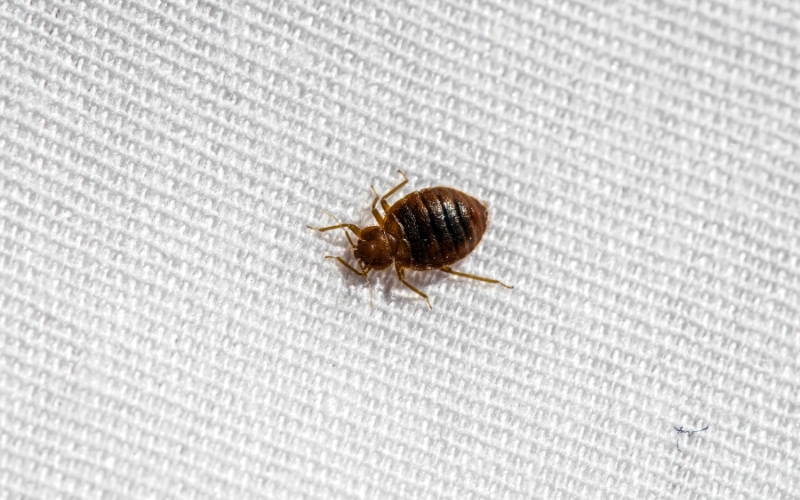
Bed bugs are parasites that feed on the blood of human hosts, and bed bug bites can be intensely itchy. Bed bugs aren’t dangerous, but they’re not a pleasant addition to life. People often find it confusing to differentiate between bed bugs and tick.
The adult bed bug is usually a reddish-brown color and about a quarter-inch long. It’s a flat, oval-shaped insect. They’re most active about an hour before dawn and feed on human blood, but they can also be active at other times during the day.
3. Poplar Weevil
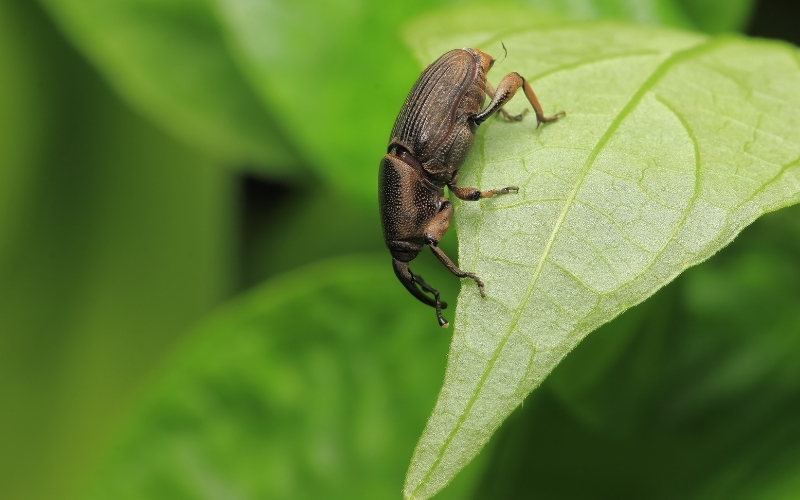
If you’ve found holes in your poplar trees, they likely are a sign of an infestation by the poplar weevil. This pest will cause extensive damage to your trees, which can break branches and lead to the tree’s death.
Several places have weevil outbreak every five to 10 years in summer. The beetle itself is a small metallic green creature with reddish-brown wings that measure roughly 1/4 inch long with a snouted nose.
They look very close to tick as they have the same size and dark color, but they can fly while ticks don’t fly. Fortunately, poplar weevil doesn’t bite humans or transmit any disease.
4. Harlequin Cabbage Bug
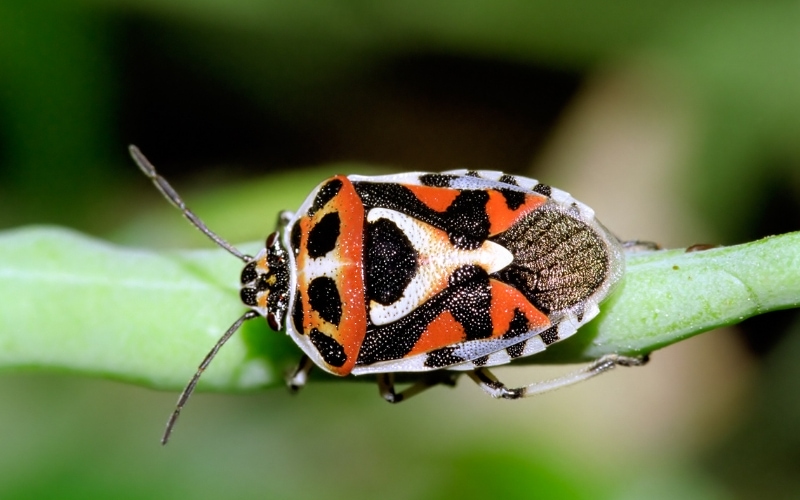
Harlequin cabbage bugs belong to the Coreidae family that have hard forewings. It’s a member of the stinkbug family and is distantly related to the more familiar Colorado potato beetle.
Their nymphs are darker in color and have no wings. Compared to tick, which is an eight-legged arachnid, the cabbage bug has six legs.
Adult females, which have wings, have an oval-shaped or elongated body. They have stink glands at the base of their legs, a trait that ticks don’t have.
Characteristics of the Harlequin cabbage bug’s head include:
- A forward-pointing snout
- Shorter antenna than its body
- Red-and-black eyes
5. Carpet Beetles
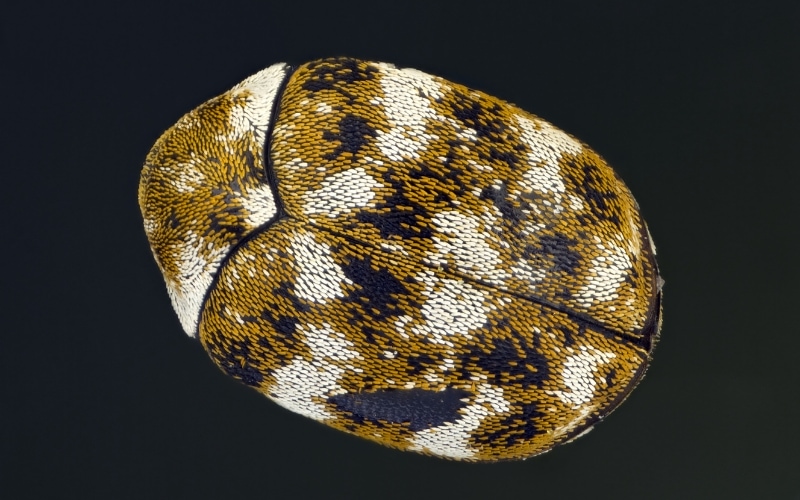
Carpet beetles are common house pests that come in many different shapes and sizes. They could be hiding anywhere in your home.
However, unlike ticks, you aren’t likely to encounter them outside your home. They spend most of their lives within carpets, walls and usually only come out when it’s warm.
Carpet beetles like to eat the natural fibers made of carpeting, wool textiles, and other household items. If you’re looking at your carpet and wondering what the little white spots are that you see, they could be a carpet beetle.
6. Spider Beetles
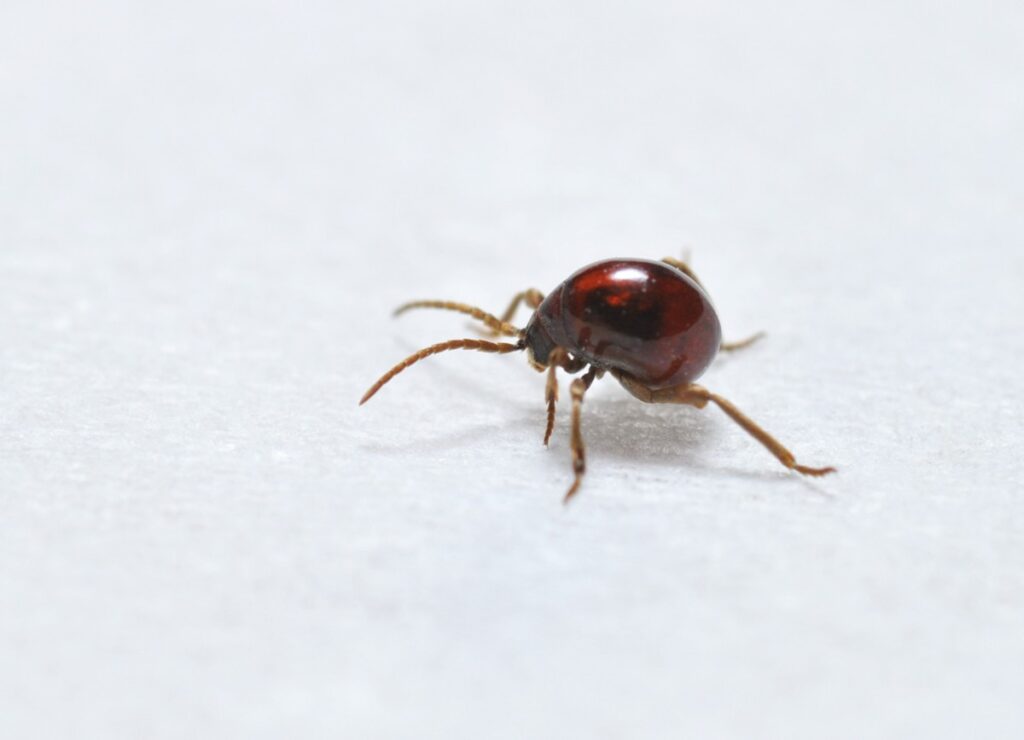
Spider beetles are a type of sap-feeding pest. They’re usually found in the grass or on the outside house. They’re about 1/2-inches long and have a long slender body, making them easy to identify.
These tiny oval-shaped insects have brown heads. Their thoraxes and dark legs are often mistaken for spiders because of their shape, but they’re beetles. The spider beetle larvae are white and up to 2 mm long with blackheads and legs.
7. Ash Plant Bug
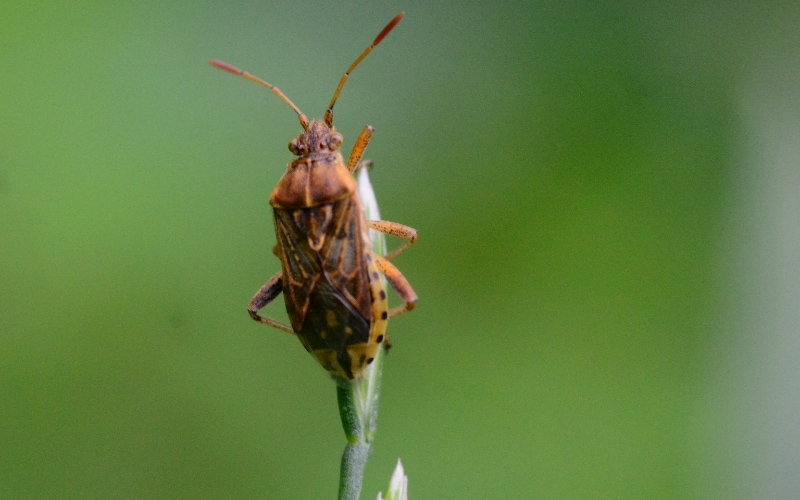
The ashplant bug is a sap-sucking pest that attacks ash trees. The bug sucks the sap out of the leaves, and this can cause the leaves to wilt and turn brown.
They resemble close to deer ticks (though it’s not a true tick). The insect is so tiny that it’s hard to see with the naked eye.
Unlike ticks, they don’t pose any danger to humans, but their round shape and black coloring make it easy to confuse with ticks. If in doubt, look for the antenna and count if it has six legs, confirming that it’s not a tick.
8. Head Lice Bug

Head lice bugs are tiny wingless insects that live off the blood of their host. They’re usually found in the hair of humans. But sometimes, they can also be found in the feathers of birds.
Like ticks, head lice are visible to the naked eyes even though they’re quite small, up to 2 mm long. The good news is that they don’t carry any diseases, unlike ticks that sometimes carry life-threatening diseases.
They have six legs and have a very light creamy-yellow soft semi-transparent body, whereas ticks have a hard exoskeleton.
9. Clover Mites
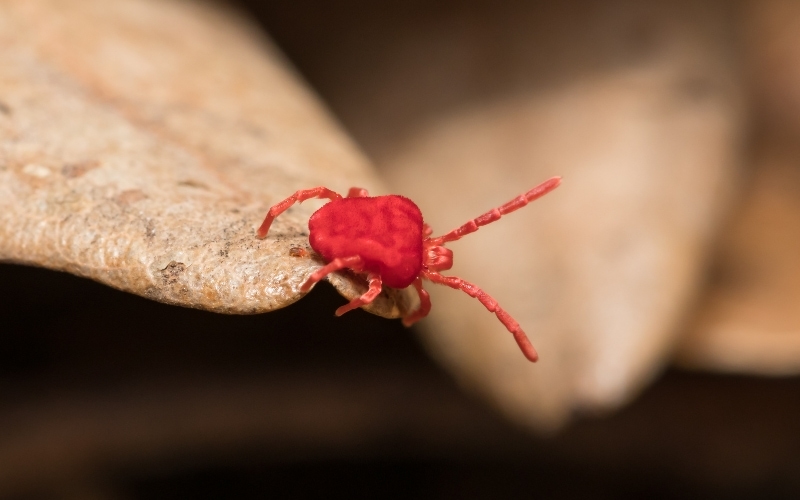
Clover mites are one of the most common pests of the garden, appearing during the mid-to-late summer. They’re particularly common in areas where clover has been planted and tend to thrive in the hot, dry late summer conditions.
They’re tiny, making them hard to identify. It has a soft body and therefore is easy to crush underfoot. They have their legs pointed forward, which makes it easy to mistake as antennae.
Fortunately, they don’t directly harm humans but are quite a menace to garden plants.
10. Bat Bug
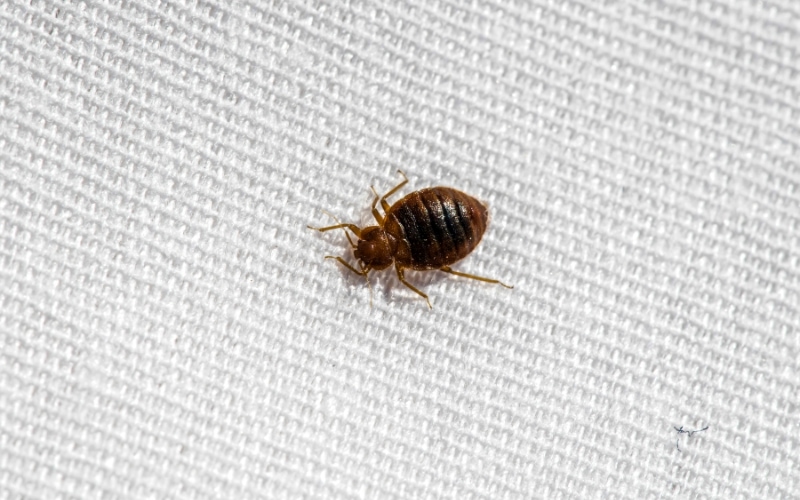
Bat bug gets its name from its bat-like appearance and its tendency to love and nest in your attic. Bat bugs are primarily found in caves, and they usually bite bats. Bat bugs live in colonies and in homes located in attics or behind walls.
The easiest way to identify a bat bug is by looking at its long tube-like mouth. It may look similar to bed bugs, but it has a hairier thorax. They’re also a lot smaller than the common bed bug.
11. Chigger
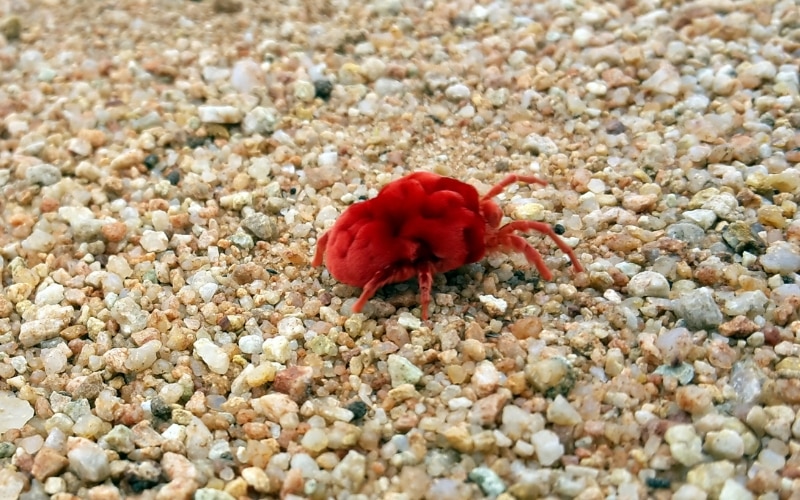
Chiggers are also known as harvest mites, but they’re actually not mites at all. They’re more closely related to ticks, spiders, and scorpions.
These are primarily red color insects that are less than 1 mm long and are oval in shape. They’re very small, which helps give them the common name of red bugs.
You can identify a chigger mite as it’s a semi-transparent, reddish-brown parasitic arachnid. You can distinguish it from other arachnids, such as ticks, by six legs and an oval body.
To prevent chigger bites, avoid wearing shorts and sandals when spending time in high grass.
12. Cockroach Nymph
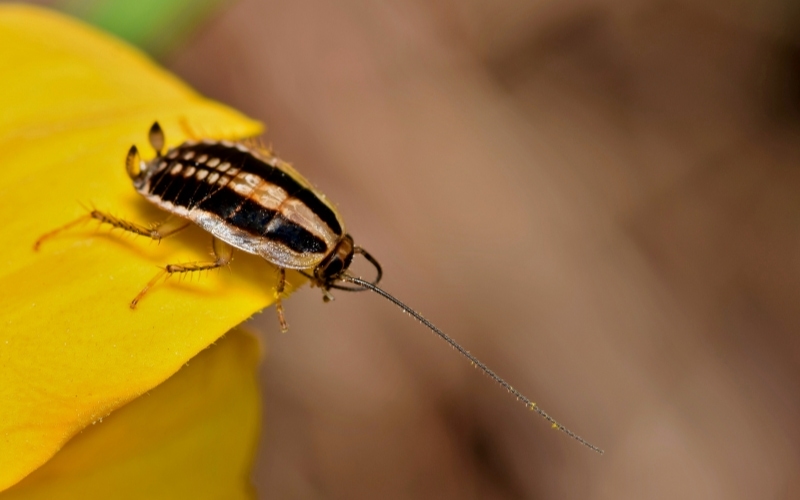
Cockroach nymphs are the babies of the cockroach family. They’re white and look like small worms. They spend most of their time hiding in cracks and under floorboards.
Nymphs are lighter in color than their adult counterparts, which is why they’re sometimes called brown-banded cockroaches.
They’re usually less than 3 mm long and darken as they grow. They have a very uncanny appearance, like ticks when they just hatched from an egg.
13. Swallow Bug
A swallow bug is a small, wingless tick-like bug that is nearly identical to adult ticks. However, they’re distinctly flatter than the oval shape of ticks by appearance. They’re native to the southern United States and Central America.
They breed during the summer and are also found in homes where they tend to bite humans.
Some swallow bug types may look similar to bed bugs, but they’re more grayish-brown than reddish color for bed bugs. They can survive several weeks without having any food.
14. Booklice Bug
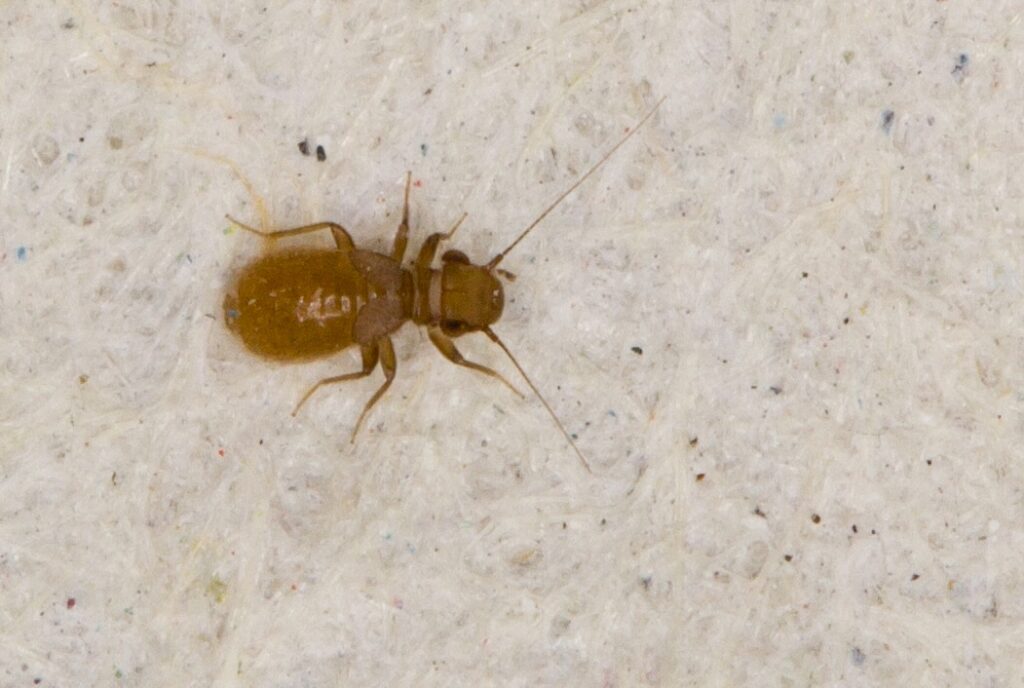
Booklice are the most common type of pest found in books and are also known as Psocids. You may find these inside books that are stored for an extended period. Paper cellulose becomes a primary source of food for these pests.
The booklice bugs are usually light in color but can appear dark in color when feeding on the binding glue. They’re small insect that also feeds on fungi, algae, and other decaying matter.
15. Drugstore beetles
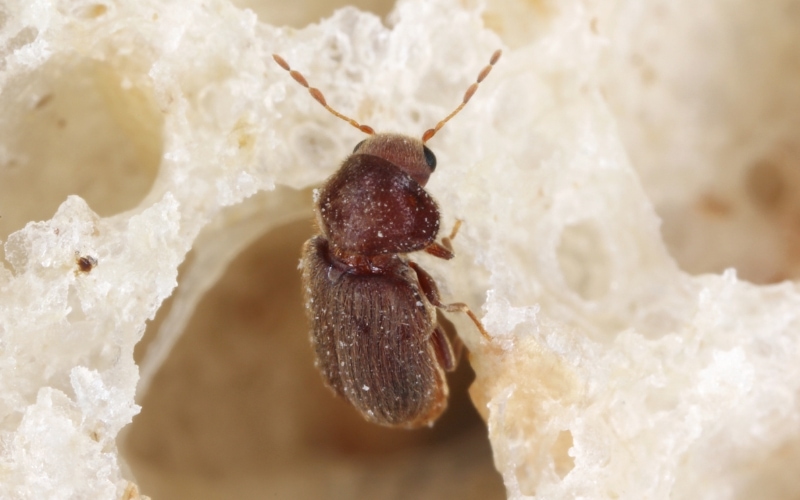
Drugstore beetles are small size insects that are usually less than 3.5 mm long. They have hard brown outer shells, and adults have wings underneath. They’re attracted to light and have a slightly oval-shaped body resembling ticks.
They’re often found hidden in dry and moist spots such as the kitchen and pantries. They can live without food for several weeks. You may often see them munching on household foods such as flour and cereals.

